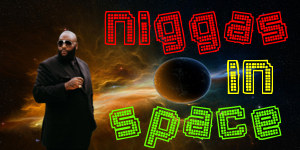the twenty-two letters of the Hebrew betabet are used to
illustrate - or veil - the Theosophic or doctrinal element. The three letters
which play the principal part in this are, ALEPH, MEM and SHIN, and these
are called Mother letters because they signify the three divisions into which
the betabet naturally falls:-
(1)..MUTES, possessing of themselves no sound except in combination
with a vowel. "M" will be found to be merely a compression of the lips.
(2)..SIBILANTS, or hissing sounds, denoted by SH.
(3)..ASPIRATES, which the ancient Theosophists hold to be intermediate
between the other two groups. "A" was taken to represent this group.
All other letters were held to be born from the three Mothers, and these
were associated with the three primordial elements; Mem with WATER,
because the chief product of water is fish, and fish are the mute creation;
Shin with FIRE, from the hissing of the flames; and Aleph with AIR, as
having an airy, vacant pronunciation, holding the balance between mute
and sibilant, as air holds the balance between fire and water. Speaking of
the Mother letters, the Sepher Yetzirah says of them: "The heavens were
produced from Fire; the earth from Water; and the air from the Spirit is as
a reconciler between the Fire and the Water ... from the Fire was made
heat, from the Water was made cold, and from the Air was produced the
temperate state, again a mediator between them." From the three Mother
letters come forth seven Double letters: BETH, GIMEL, DALETH, KAPH, PE,
RESH and TAU, each embodying the characteristics of the sacred Planets,
and just as each have a double aspect and influence, so the seven double
letters have two aspects, or their hard and soft sounds, which modify the
meaning of the words in which they are used. There are finally twelve
simple letters which are associated with the twelve signs of the Zodiac:
HEH, VAU, ZAIN, CHETH, TETH, YOD, LAMED, NUN, SAMECH, OIN,
TZADDI and QOPH, These Simple letters give special force to the words in
which they are used, modified by the varying power of the Double letters
in the word, just as the twelve Houses give significance to a Horoscope,
but are modified by the position of the Planets in each House. Hence, the
twelve simple letters represent the twelve properties or potencies which
make up the earth's aura, while the seven double letters, like the seven
Planets, represent the seven ELOHIM oppressed through the seven Nature
notes, and the seven colours into which the One Light (or Yod) is broken
up. It is significant to note that the division of the twenty-two letters of the
Hebrew betabet into groups of three, seven and twelve letters respectively,
corresponds to the number of units shown on the three parts of the
traditional form of the "True Cross", viz. three units the upper arm, seven
the cross-bar, and twelve the upright below the cross-bar.
We may now consider the Kabbalah in the light of the two main divisions,
the Dogmatic and the Practical, but must not lose sight of the fact that the
whole teaching is based upon the assumption that every sentence, phrase,
word and letter of the Hebrew Pentateuch is Divinely inspired, and that no
"Jod nor tittle" may be changed or neglected. One of the most famous of
the 17th. century Rabbins, Rabbi Menassek ben Israel, compares the
Mosaic books to the body of man, the Mishna (commentaries) to his soul;
and the Kabbalah to the spirit inhabiting the soul. Simon ben Yochai says:
"Woe unto the man who sees in the Torah nothing but simple narratives
and ordinary words, for if, in truth, it contained only that, we should have
been able, even today, also to compose a Torah which would be, in very
much another way, worthy of regard. In order to find simple statements we
should only have to betake ourselves to the ordinary legislators, among
whom we could find valuable words in even greater quantity. It would
suffice us to imitate them and to make a law after their words and example.
But it is not thus. Every word of the Torah contains an elevated sense and
a sublime mystery


